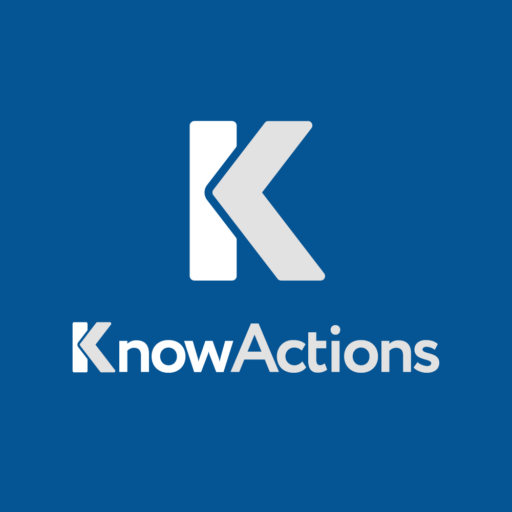Did you know that 83% of modern workers spend between four to 12 hours in meetings every week, with 17% dedicating over 12 hours to these gatherings1? This staggering statistic underscores the pressing need for cutting down on unnecessary meetings and focusing on productive tasks. The COVID-19 pandemic has worsened this problem, with weekly meeting time more than doubling since its start2.
Unnecessary meetings cost U.S. businesses almost $400 billion in 2019, underscoring the critical need for improving meeting efficiency2. This financial burden, along with its negative effects on work-life balance and productivity, necessitates a significant change in how organizations manage their meeting culture.
To address this challenge, companies are adopting new strategies. For example, introducing meeting-free days and using asynchronous communication tools can greatly decrease the need for constant meetings. By adopting these alternatives, businesses can improve productivity and allow employees to engage in uninterrupted, deep work.
Embracing technology is key in this effort. Automated scheduling and project management tools can streamline coordination among stakeholders, finding the best meeting times and cutting down on unnecessary gatherings2. Moreover, time-tracking applications like Clockify enable teams to analyze their time usage, pinpointing and eliminating superfluous meetings3.
Key Takeaways
- Excessive meetings significantly impact productivity and costs
- Implementing meeting-free days can boost focused work time
- Asynchronous communication tools reduce the need for frequent meetings
- Time-tracking applications help identify unnecessary meetings
- Automated scheduling tools optimize meeting coordination
- Reducing meetings enhances employee engagement and work-life balance
The Impact of Excessive Meetings on Workplace Productivity
Meetings have become a dominant feature of contemporary work life. Executives now dedicate nearly 23 hours weekly to these gatherings, a significant leap from the less than 10 hours in the 1960s4. This surge underscores the necessity for robust Time Management Strategies to counteract the proliferation of workplace meetings.
Hidden Costs of Unnecessary Meetings
The repercussions of excessive meetings extend beyond mere time wastage. Dysfunctional meeting behaviors are associated with diminished market share, innovation, and employment stability4. Employees often spend up to 40% of their time in meetings, potentially obstructing actual work productivity5. This highlights the critical need for effective Meeting Fatigue Solutions.
Statistics on Meeting Inefficiency
Recent statistics reveal a stark picture of meeting inefficiency:
- 70% of meetings hinder employees from engaging in productive work6.
- The average number of meetings attended by a worker has increased by 13.5%6.
- Newly promoted managers are conducting almost a third more meetings than their experienced counterparts6.
Effects on Employee Morale and Productivity
Excessive meetings can severely erode employee morale and productivity. One employee reported dedicating 80% of their time to meetings, finding it challenging to complete tasks effectively5. Experts suggest capping recurring weekly meetings at 20% of one’s time to enhance efficiency5. Adopting proper rest strategies can help alleviate meeting fatigue and elevate overall productivity.
| Meeting Impact | Percentage |
|---|---|
| Meetings hindering productive work | 70% |
| Increase in average meetings attended | 13.5% |
| Recommended cap on weekly recurring meetings | 20% |
By acknowledging these effects and adopting effective Time Management Strategies, organizations can strive towards a more balanced and productive work environment.
Identifying Unnecessary Meetings in Your Organization
Recognizing unnecessary meetings is vital for boosting productivity. Many firms face the challenge of meeting overload, resulting in time and resource waste. A staggering 47% of employees consider meetings the biggest time-waster at work7. To tackle this, companies must pinpoint signs of ineffective gatherings.
A key indicator is the absence of Collaborative Communication during meetings. When participants are disengaged or discussions lack focus, it signals a problem. Another sign is meetings that deviate significantly from their scheduled duration, indicating poor time management.
Excessive meetings often lead to low employee morale and missed deadlines. Research indicates that 70% of meetings hinder employees from finishing their regular tasks7. This disruption severely impacts productivity, as it takes over 23 minutes for an employee to refocus after a meeting interruption7.
To identify unnecessary meetings, consider these factors:
- Frequency of all-hands meetings
- Redundant standing check-ins
- Unstructured discussions
- Pre-meeting meetings
Implementing Effective Agenda Setting can streamline meetings and reduce their frequency. By utilizing productivity tools, organizations can monitor meeting time and evaluate their worth8. This data-driven strategy allows companies to make informed choices about which meetings to keep, modify, or eliminate.
| Meeting Type | Potential Alternative | Time Saved |
|---|---|---|
| Weekly status updates | Asynchronous communication | 1-2 hours per week |
| All-hands meetings | Monthly or quarterly gatherings | 2-4 hours per month |
| Unstructured brainstorming | Focused workshops | 3-5 hours per project |
By identifying and eliminating unnecessary meetings, organizations can reclaim valuable time and enhance overall productivity. Remember, effective meetings should promote collaboration, drive decisions, and advance projects.
Strategies for Reducing Unnecessary Meetings
In today’s fast-paced work environment, cutting down on unproductive meetings is crucial for boosting productivity. Implementing effective strategies can help organizations minimize distractions and optimize time management.
Implementing Meeting Policies
Establishing clear meeting policies is a key step in reducing unnecessary gatherings. Companies should set guidelines for meeting frequency and duration. A staggering 71% of meetings yield little result, with an average worker spending up to 31 hours in unnecessary meetings9. By implementing stricter policies, organizations can significantly cut down on wasted time.
Establishing Meeting-Free Days
Designating specific days or time blocks as meeting-free can greatly enhance productivity. Slack’s pilot program found that 84% of employees benefited from “Focus Fridays,” where internal meetings were canceled to allow uninterrupted work time10. This approach aligns with virtual meeting best practices, providing employees with dedicated time for focused work.

Utilizing Time-Tracking Tools
Implementing time-tracking tools can help analyze the impact of meetings on productivity. These tools provide valuable insights into time allocation, enabling organizations to identify and eliminate unnecessary meetings. By leveraging such data, companies can make informed decisions about their meeting culture.
Empowering Employees to Decline Meetings
Encouraging employees to decline unnecessary meetings or suggest alternatives is crucial. Almost a third of meetings are deemed unnecessary, resulting in wasted time and resources11. Empowering staff to make decisions about their meeting attendance can lead to more efficient use of time and improved overall productivity.
| Strategy | Benefit | Implementation |
|---|---|---|
| Meeting Policies | Reduce unproductive meetings | Set clear guidelines for frequency and duration |
| Meeting-Free Days | Enhance focused work time | Designate specific days without internal meetings |
| Time-Tracking Tools | Analyze meeting impact | Use software to monitor time allocation |
| Employee Empowerment | Optimize time management | Allow staff to decline unnecessary meetings |
By implementing these strategies, organizations can create a more productive work environment, minimize distractions, and ensure that meetings serve their intended purpose. The key is to strike a balance between collaboration and individual productivity, ultimately leading to a more efficient workplace.
Leveraging Technology to Minimize Meeting Frequency
Technology is essential in reducing unnecessary meetings and enhancing productivity. By using smart tools for Collaborative Communication, organizations can streamline sharing information and make decisions more efficiently.
Project management software and digital platforms significantly reduce meeting times across industries. For instance, in the food and beverage manufacturing sector, configurable alerts and notifications enhance communication in areas like inventory, production planning, and quality control12.
Data-Driven Decision Making is vital for optimizing meeting frequency. By analyzing meeting data, companies can cut meeting times by 10-20% without sacrificing effectiveness13. This method results in substantial time savings and reduced operational costs.
“Technology-driven solutions can lead to a substantial decrease in meetings required for communication and decision-making processes.”
Recent studies indicate a 12.9% increase in meetings since 2020, with 70% of them hindering employee productivity14. To counter this, organizations can employ data analytics to uncover patterns in meeting frequency and effectiveness. This knowledge facilitates better scheduling and more focused discussions.
Adopting asynchronous collaboration tools is another strategic move. These platforms enable teams to share updates, pose questions, and make decisions without the need for real-time meetings. This method values employees’ time and fosters more flexible work schedules.
By harnessing technology for Collaborative Communication and Data-Driven Decision Making, companies can foster a more efficient work environment. This leads to fewer unnecessary meetings, increased productivity, and enhanced employee satisfaction.
Asynchronous Communication: An Alternative to Meetings
In today’s fast-paced work environment, Time Management Strategies are crucial for boosting productivity. Leveraging asynchronous communication as an alternative to traditional meetings is an effective approach.
Benefits of Asynchronous Communication
Asynchronous communication offers significant advantages in the workplace. It allows employees to focus on their tasks without constant interruptions. Studies show that 68% of workers lack uninterrupted time to achieve their goals due to distractions, and the time spent in meetings has tripled since pre-pandemic levels15. By adopting asynchronous communication, companies like Techsmith have seen a 15% increase in worker productivity15.
Tools for Effective Asynchronous Collaboration
Collaborative Communication tools play a vital role in facilitating asynchronous work. Popular options include:
- Project management software
- Slack
- Microsoft Teams
- Trello
These platforms support efficient teamwork without constant face-to-face interactions16. Companies using such tools have reported completing more projects per year after implementing meeting reduction strategies15.
Best Practices for Asynchronous Work
To maximize the benefits of asynchronous communication:
- Set clear expectations for response times
- Use the right tool for each task
- Provide detailed context in messages
- Regularly update shared documents
Implementing these practices can lead to significant time savings. For example, Asana’s “Meetings Doomsday” experiment resulted in participants saving 11 hours per month15. Similarly, Slack observed a halving of meetings through “Focus Fridays” and increased worker break time15.
| Company | Strategy | Result |
|---|---|---|
| Asana | “Meetings Doomsday” | 11 hours saved per month |
| Slack | “Focus Fridays” | 50% reduction in meetings |
| Atlassian | 30-40% focus time | 31% more progress on projects |
By adopting asynchronous communication, organizations can significantly reduce the 24 billion hours wasted annually in unproductive meetings17. This shift not only saves time but also improves employee satisfaction and overall productivity.
Enhancing Meeting Efficiency When They Are Necessary
When meetings are unavoidable, optimizing them is key for efficiency. Clear agendas with action items are vital for setting effective agendas. Research shows that companies with 500 or more employees spend 17% of their time in meetings. Meanwhile, helping professions dedicate about 47% of their workday to these gatherings18.

To enhance Meeting Efficiency, invite only essential attendees and keep discussions focused. Consider allowing partial attendance for relevant parts to respect everyone’s time. The average employee spends about 31 hours per month in unproductive meetings, costing U.S. businesses $399 billion in 201919.
Using project management tools can greatly reduce the need for status update meetings. For instance, platforms like Jira or Asana can cut these meetings from five days a week to just two or three20. This method not only saves time but also fosters better collaboration and goal achievement.
| Meeting Type | Traditional Approach | Optimized Approach |
|---|---|---|
| Status Updates | Daily meetings | 2-3 times per week with project management tools |
| Team Meetings | Multiple separate sessions | Consolidated into one efficient meeting |
| Information Sharing | In-person meetings | Email or communication channels (Slack, Teams) |
For necessary meetings, leverage technology like AI tools for automatic note-taking and transcription. This maximizes engagement during discussions and ensures important points are captured. By implementing these strategies, organizations can significantly enhance Meeting Efficiency and reclaim valuable work time.
Time Management Techniques to Boost Productivity
Effective time management is essential for prioritizing tasks and making decisions based on data. By using smart strategies, professionals can greatly improve their efficiency and output.
Time Blocking for Focused Work
Time blocking is a method that significantly boosts productivity. It involves setting aside specific times for specific tasks or types of work. This approach has been shown to increase productivity by up to 80% for many professionals21. By eliminating distractions and focusing on one task at a time, employees can achieve better results and feel less stressed.
Optimizing Calendar Usage
Smart calendar management is vital for effective time use. Clearly defining the purpose and attendees of meetings can make them more efficient. Studies indicate that 71% of knowledge workers felt burned out in 2020 due to poor time management, underscoring the need for optimizing calendars22.
Implementing AI for Meeting Notes and Follow-ups
Artificial Intelligence (AI) tools can transform meeting efficiency. By using AI for recording and transcribing meetings, organizations can eliminate manual note-taking and ensure accurate documentation. This technology facilitates better follow-ups and action item tracking, which is crucial for making data-driven decisions.
| Time Management Technique | Productivity Increase | Stress Reduction |
|---|---|---|
| Time Blocking | 80% | 60% |
| Optimized Calendar Usage | 65% | 55% |
| AI for Meeting Management | 75% | 70% |
By adopting these time management techniques, professionals can significantly boost their productivity. It’s important to note that 80% of knowledge workers report working with their inbox or other communication apps open, leading to decreased efficiency22. Implementing focused work periods and leveraging AI can help overcome these challenges, leading to more effective prioritization of productive work.
Reducing Unnecessary Meetings: A Case Study
Shopify’s bold approach to meeting efficiency offers valuable insights for companies aiming to boost productivity. The e-commerce giant took drastic measures to combat meeting overload, a problem that plagues many organizations. Studies show that 71% of meetings are considered unproductive, and reducing meetings by 40% can increase productivity by 71%23.
Shopify’s strategy involved canceling all recurring meetings with three or more attendees and implementing meeting-free Wednesdays. This data-driven decision making process resulted in the removal of about 10,000 events from employee calendars. The company also mandated that large meetings be held in a six-hour block on Thursdays, further streamlining their meeting schedule.
This approach aligns with research indicating that employers lose an estimated $37 billion USD annually on unnecessary meetings24. By focusing on the three D’s of effective meetings – decisions, debate, and discussion – Shopify prioritized meeting efficiency and employee productivity.
| Shopify’s Strategy | Impact |
|---|---|
| Cancel recurring meetings | Reduced calendar clutter |
| Meeting-free Wednesdays | Increased focus time |
| Thursday meeting block | Improved scheduling efficiency |
Shopify’s case demonstrates that by critically evaluating meeting necessity and implementing strategic changes, companies can significantly enhance productivity. This approach can help organizations decide which meetings are crucial and which can be handled asynchronously. It leads to more efficient use of employee time and resources24.
Conclusion
Modern organizations must focus on reducing unnecessary meetings and prioritizing productive work. The average number of meetings rose by 7.4% from June 2020 to December 2021, with employees spending more time in meetings that lack quality25. This trend underscores the pressing need for a reevaluation of meeting culture within businesses.
Companies allocate 7% to 15% of their personnel budgets to meetings, yet over a third of managers find these meetings unproductive26. By adopting strategies like setting meeting-free days and using asynchronous communication tools, firms can recover valuable work hours and enhance productivity.
It’s essential to understand that a universal approach to workplace rules may not work for everyone25. Instead, businesses should rely on data-driven decisions to optimize productivity and employee satisfaction. By calculating meeting costs and monitoring attendance, organizations can determine the return-on-investment and make informed decisions about their meeting practices26.
The ultimate aim is to achieve a balance between effective communication and focused work time. By continually assessing and refining their meeting strategies, organizations can foster a more efficient, productive, and fulfilling work environment for all employees.





